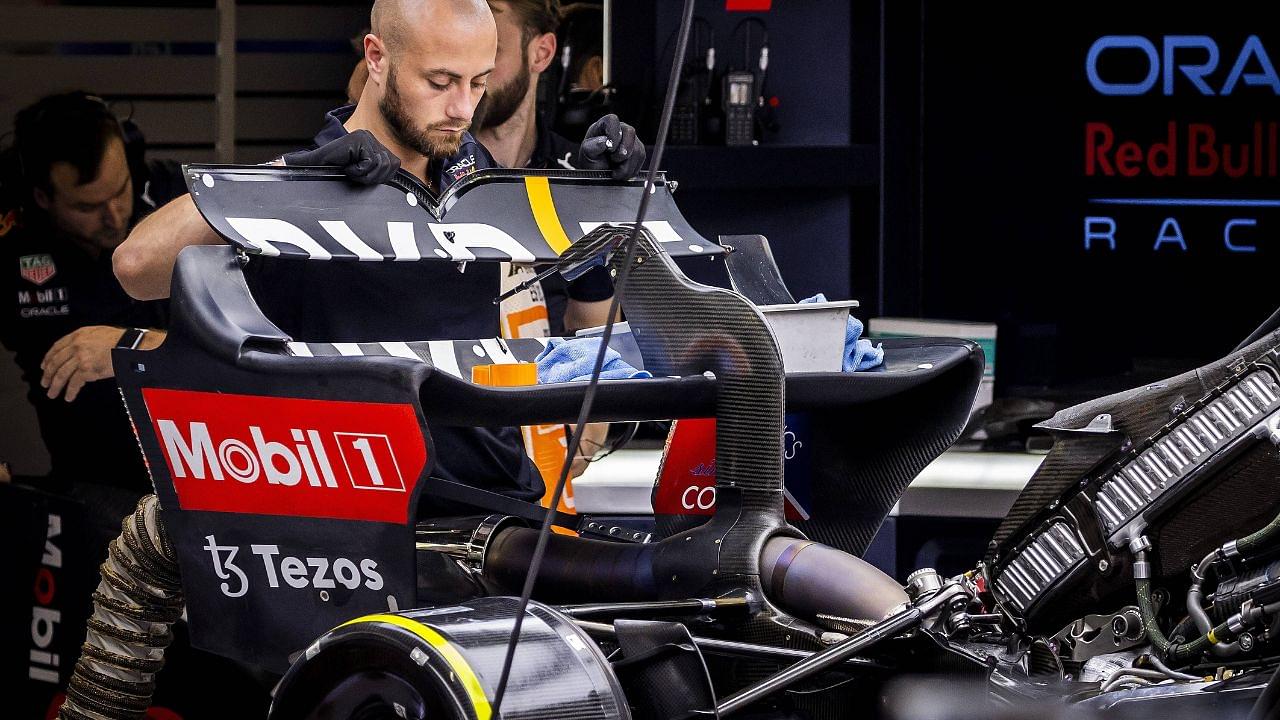DRS is a term often spoken about during F1 races, and every modern circuit also has designated ‘DRS Zones’. They seemingly give the teams a strong advantage and can decide the outcome of the races. But what is DRS? How does it help teams?
DRS or, the ‘Drag Reduction System’, as the name suggests, reduces the drag produced by F1 cars which increases the car’s speed. However, the DRS is a bit more complicated than that, especially, in terms of when drivers can use it or for how long.
What is the DRS?
The Drag Reduction System is fitted on the rear wing of F1 cars. It was introduced in 2011 and was installed in the form of a flap on the wing, that drivers can open at the press of a button. Upon opening this flap, the car’s speed can increase significantly.
For example, if an F1 car travels at a speed of 180 mph, opening the DRS will allow the driver to reach speeds over 200 mph. Since this gives such an advantage, why don’t drivers use it throughout the race? What stops them from getting this boost that could help them achieve better results?
The simple answer is that they are not allowed to.
When can drivers use the Drag Reduction System?
Using a DRS helps the driver get top speed. However, the driver can only activate DRS when he is less than one second behind the car in front of him. This time is measured when they cross the detection line, right before the DRS Zone begins.
The DRS Zone is a section of the track that is usually long, without any sharp turns or corners. It is only here that drivers can open their flaps, allowing them to get the boost. Mostly, drivers use this advantage to overtake cars in front.
In fact, sometimes, the DRS makes it fairly easy for drivers to overtake. This particular reason makes the introduction of DRS very controversial.
Many suggest that the natural ability of drivers to overtake a car that is pulling away is getting diminished. Still, it is to be noted that simply pressing the DRS button does not guarantee an easy overtake.
Why was the controversial DRS introduced?
In 2011, F1 came up with the idea of DRS to help drivers come up with a solution to the ‘dirty, turbulent air’. This dirty air is an aerodynamic barrier created between the car in front and themselves, which made it very difficult for the ones behind to follow the car, let alone overtake.
Opening the DRS upon pressing the button allowed drivers to overcome this problem. Over the years, we’ve seen some feisty overtakes with the help of this system. Drivers even used it during qualifying, to get a better speed advantage, which significantly helped them reduce lap-times.
Red Bull have shown greater increase in speed with DRS activation compared to their rivals
A vital clue may have found the source of its performance superiority #AustrianGP #F1 #F1Unlocked
— Formula 1 (@F1) June 27, 2023
In 2022, however, when the aero regulations underwent a massive overhaul, the problem of dirty air was supposedly handled. Still, F1 didn’t get rid of the DRS. Drivers found it even easier to exploit this and get the better of the ones ahead of them.
It is also controversial because the weaker teams are always at a disadvantage when a stronger car opens the DRS right behind them. It puts the former team’s driver in a completely helpless situation.






